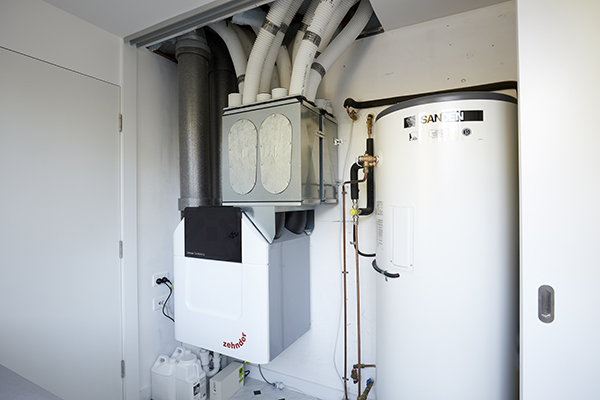Simple Tips to Maximize HRV Performance
Checking out the Benefits of Heat Recovery Ventilation for Power Effectiveness in Residences
Heat Recovery Ventilation (HRV) systems provide house owners a useful method to improving energy efficiency. By recovering heat from outward bound air, these systems can substantially decrease cooling and heating expenses. In addition, they provide a consistent supply of fresh air, enhancing interior air quality and convenience levels. As homeowners take into consideration sustainable choices, comprehending the subtleties of HRV systems becomes progressively important. What aspects should one examine prior to making such an investment?
Recognizing Heat Recovery Ventilation Systems

Exactly How HRV Boosts Indoor Air Top Quality

Energy Savings: The Economic Benefits of HRV
Making best use of energy effectiveness, heat recovery ventilation (HRV) systems supply substantial financial advantages for homeowners. By recuperating and recycling warm from exhaust air, HRVs significantly lower cooling and heating expenses. This modern technology can result in power financial savings of approximately 30%, depending on environment and use patterns. Homeowners typically observe minimized utility bills soon after installment, making HRVs an economically sensible financial investment over time. In addition, numerous areas provide motivations or discounts for energy-efficient upgrades, further improving the financial appeal. As energy costs remain to climb, the cost-effectiveness of HRVs becomes significantly clear. In general, the unification of HRV systems not just promotes power performance however likewise contributes to long-term financial savings for homes.
The Environmental Effect of Heat Recovery Ventilation
A significant environmental advantage of heat recovery ventilation (HRV) systems depends on their capability to reduce total energy intake. By recovering heat from exhaust air and transferring it to inbound fresh air, HRV systems decrease the requirement for energy-intensive heating and cooling down techniques. This reduction in power demand adds to reduce greenhouse gas emissions, as much less nonrenewable fuel source is required to keep comfy interior temperature levels. Furthermore, HRV systems boost interior air high quality by efficiently exchanging stale air with fresh exterior air, decreasing dependence on mechanical cooling systems that can hurt the environment. Overall, the application of HRV systems supports sustainable living practices and straightens with international initiatives to battle environment change by promoting energy performance in household settings.
Choosing the Right HRV System for Your Home
Just how can property owners assure they pick the ideal heat recovery ventilation (HRV) system for their needs? They must assess their home's dimension and format, as these variables influence air flow requirements. Next off, examining the system's effectiveness rankings is crucial, as higher scores show much better efficiency and power cost savings. Homeowners should additionally consider installment and maintenance expenses, comparing different brands and models for worth. Additionally, it is essential to review noise levels, as some systems run even more quietly than others. Consulting with HVAC experts can provide customized suggestions based on certain home problems. Taking a look at customer evaluations and warranties can help in making an informed choice, guaranteeing that the picked HRV system successfully boosts indoor air top quality and power efficiency.
Often Asked Questions

Exactly how Frequently Should I Clean or Maintain My HRV System?
The frequency of cleansing or keeping a warm recovery ventilation (HRV) system usually depends upon usage and environmental elements. Usually, it is recommended to do maintenance every 6 months to HRV Heat Recovery Ventilation assure peak performance and air high quality.

Can HRV Solutions Help In Reducing Humidity Levels Indoors?
HRV systems can properly decrease interior humidity levels by trading stagnant, moist air with fresh, drier air from outdoors. HRV Heat Recovery Ventilation. This procedure aids maintain a well balanced interior atmosphere, improving comfort and avoiding moisture-related issues
What Is the Life-span of a Typical HRV System?
The lifespan of a common heat recovery ventilation (HRV) system differs, generally lasting between 10 to 15 years. Regular upkeep can prolong its effectiveness and operational life, making certain peak performance throughout its use period.
Are There Any Kind Of Noise Worry About HRV Systems?
Sound worry about HRV systems can occur, specifically from follower operation. However, lots of modern-day devices are designed to reduce sound degrees, guaranteeing they run quietly while preserving efficiency, which attends to possible disruptions in living environments.
Can I Install an HRV System Myself, or Do I Need a Specialist?
The individual contemplated whether to install the heat recovery ventilation (HRV) system personally or employ an expert. Generally, while do it yourself setup is feasible, know-how assurances appropriate performance and compliance with neighborhood structure codes, boosting system performance.